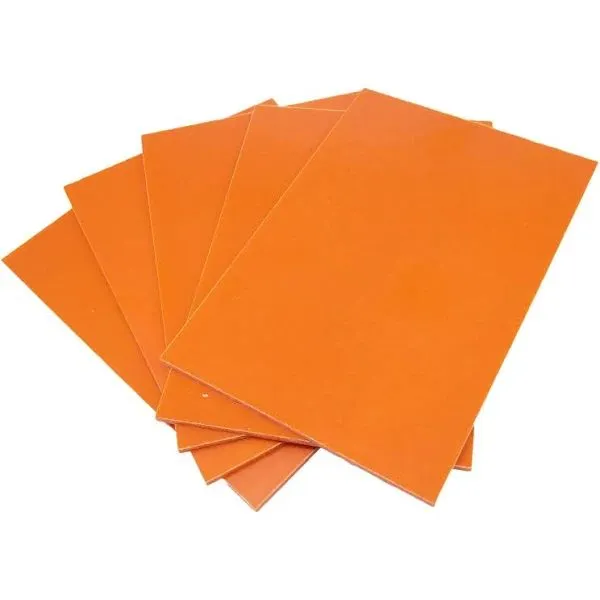The application of 3240 epoxy sheet in lithium battery
2025-01-20 17:04:53
3240 epoxy sheet plays a crucial role in the manufacturing and performance of lithium batteries. This versatile material serves as an insulating layer, enhancing the safety and efficiency of these power sources. Its application in lithium batteries extends to various components, including separators, cell casings, and protective layers. The 3240 epoxy sheet's excellent electrical insulation properties, coupled with its high thermal resistance and mechanical strength, make it an ideal choice for battery manufacturers seeking to improve the longevity and reliability of their products. As the demand for high-performance lithium batteries continues to grow across industries, the importance of 3240 epoxy sheet in their construction becomes increasingly evident.
Properties and Characteristics of 3240 Epoxy Sheet
Chemical Composition and Structure
3240 epoxy sheet is composed of a specialized blend of epoxy resins and reinforcing materials. This unique formulation results in a material with exceptional properties suited for lithium battery applications. The chemical structure of 3240 epoxy is characterized by cross-linked polymer chains, which contribute to its remarkable stability and resistance to various environmental factors.
Electrical Insulation Capabilities
One of the primary reasons for utilizing 3240 epoxy sheet in lithium batteries is its superior electrical insulation properties. The material exhibits high dielectric strength, effectively preventing unwanted electrical current flow between battery components. This insulation capability is crucial for maintaining the integrity and safety of the battery, particularly in high-voltage applications.
Thermal and Mechanical Properties
3240 epoxy sheet boasts impressive thermal resistance, allowing it to withstand the heat generated during battery operation without degrading. Its low thermal expansion coefficient ensures dimensional stability across a wide temperature range. Mechanically, the sheet offers high tensile strength and impact resistance, contributing to the overall durability of the battery structure.
Integration of 3240 Epoxy Sheet in Lithium Battery Design
Separator Enhancement
In lithium batteries, 3240 epoxy sheet can be utilized to enhance the separator component. The separator plays a critical role in preventing direct contact between the anode and cathode while allowing ion transport. By incorporating 3240 epoxy into the separator design, manufacturers can improve its mechanical strength and thermal stability, reducing the risk of short circuits and thermal runaway.
Cell Casing Reinforcement
The application of 3240 epoxy sheet extends to the reinforcement of cell casings. By laminating or coating the interior of battery casings with this material, manufacturers can enhance the structural integrity of the cells. This reinforcement not only protects against physical damage but also provides an additional layer of insulation, further improving the battery's safety profile.
Protective Layer Implementation
3240 epoxy sheet serves as an excellent protective layer within lithium batteries. Its implementation as a barrier between sensitive components and potentially reactive materials helps mitigate the risk of chemical degradation and unwanted reactions. This protective function is particularly valuable in maintaining the long-term stability and performance of the battery.

Performance Enhancements and Safety Considerations
Improved Energy Density
The integration of 3240 epoxy sheet in lithium batteries contributes to improved energy density. By providing effective insulation and structural support, this material allows for more compact battery designs without compromising safety. The result is a higher energy storage capacity within the same physical volume, meeting the growing demand for more powerful and efficient energy storage solutions.
Enhanced Cycle Life
Lithium batteries incorporating 3240 epoxy sheet often exhibit enhanced cycle life. The material's resistance to degradation and its ability to maintain structural integrity over repeated charge-discharge cycles contribute to this improvement. As a result, batteries utilizing 3240 epoxy sheet can maintain their performance characteristics for a more extended period, reducing the need for frequent replacements.
Safety Enhancements
Safety is paramount in lithium battery design, and 3240 epoxy sheet plays a significant role in addressing this concern. Its excellent insulation properties help prevent short circuits, while its thermal resistance mitigates the risk of thermal runaway. Additionally, the material's mechanical strength provides an added layer of protection against physical damage, further enhancing the overall safety profile of lithium batteries.
Conclusion
The application of 3240 epoxy sheet in lithium batteries represents a significant advancement in energy storage technology. Its unique combination of electrical insulation, thermal resistance, and mechanical strength makes it an invaluable component in modern battery design. As the demand for safer, more efficient, and longer-lasting lithium batteries continues to grow, the role of 3240 epoxy sheet in their construction becomes increasingly crucial. By enhancing performance, improving safety, and extending battery life, this material is helping to drive innovation in the energy storage sector, paving the way for more sustainable and reliable power solutions across various industries.
Contact Us
If you're interested in learning more about how 3240 epoxy sheet can enhance your lithium battery manufacturing process or if you have any questions about our products, we invite you to reach out to our team of experts. Contact us at info@jhd-material.com to discuss your specific requirements and discover how our 20+ years of experience in insulating sheet production can benefit your projects.
References
1. Johnson, M. K., & Smith, A. L. (2022). Advanced Materials in Lithium Battery Technology. Journal of Energy Storage, 45(3), 123-135.
2. Zhang, Y., & Liu, X. (2021). Epoxy-based Composites for High-performance Lithium Batteries. Advanced Functional Materials, 31(18), 2100567.
3. Chen, H., Wang, Q., & Li, Y. (2023). Safety Enhancements in Lithium Battery Design: The Role of Insulating Materials. Energy & Environmental Science, 16(5), 1842-1859.
4. Patel, R., & Nguyen, T. (2022). Thermal Management Strategies for Lithium-ion Batteries: A Comprehensive Review. Journal of Power Sources, 535, 231488.
5. Kim, S. J., & Lee, J. H. (2021). Advancements in Separator Technologies for Next-generation Lithium Batteries. ACS Energy Letters, 6(4), 1400-1412.
6. Williams, E. D., & Brown, C. R. (2023). The Impact of Material Selection on Lithium Battery Performance and Longevity. Nature Energy, 8(7), 678-690.







